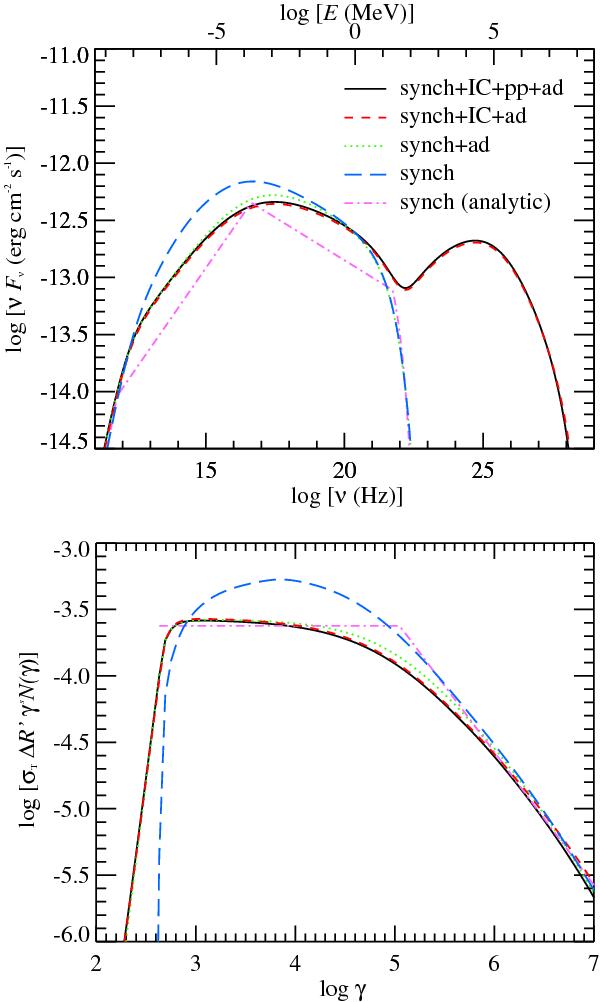Fig. 1

Simulated afterglow spectrum in the observer frame (top panel) and the electron distribution in the fluid frame (bottom panel) at radius r = 3.4 × 1017 cm. The particle distributions have been obtained with four different combinations of radiative and adiabatic processes. Synchrotron emission/absorption, Compton scattering, pair production/annihilation and adiabatic energy losses are indicated in the figure by the abbreviations syn, IC, pp and ad, respectively. In the simulation where only synchrotron processes are included, self-absorption heating of the electrons is not accounted for. The analytic synchrotron solution by Sari et al. (1998) is also shown in the figures. The simulation parameters are E0 = 1053erg, n0 = 1 cm-3, ϵe = 0.1, ϵB = 10-3, Γ0 = 400 and s = 2.3. The high-energy cutoff of the electron distribution has a constant value γmax = 4 × 107, and the GRB is located at a redshift z = 1. In the bottom panel, N(γ) ≡ dn/dγ is the number density of electrons per dimensionless energy interval. The distribution function has been multiplied by σTΔR′ to find the Thomson optical depth and by γs in order to visualize which electrons are cooling: a flat segment in the distribution means that the slope is the same as that of the injection function, demonstrating that the electrons are uncooled. The figure may be compared with Figs. 4 and 5 of PM09.
Current usage metrics show cumulative count of Article Views (full-text article views including HTML views, PDF and ePub downloads, according to the available data) and Abstracts Views on Vision4Press platform.
Data correspond to usage on the plateform after 2015. The current usage metrics is available 48-96 hours after online publication and is updated daily on week days.
Initial download of the metrics may take a while.


